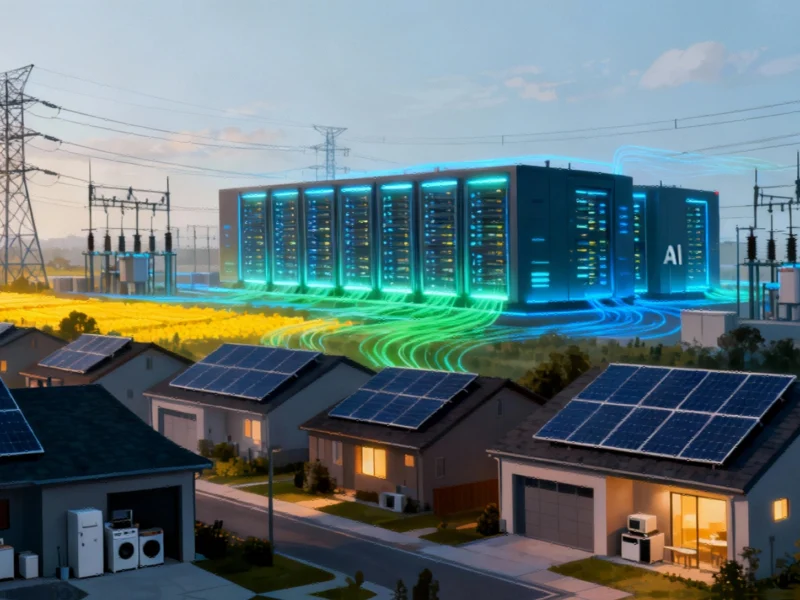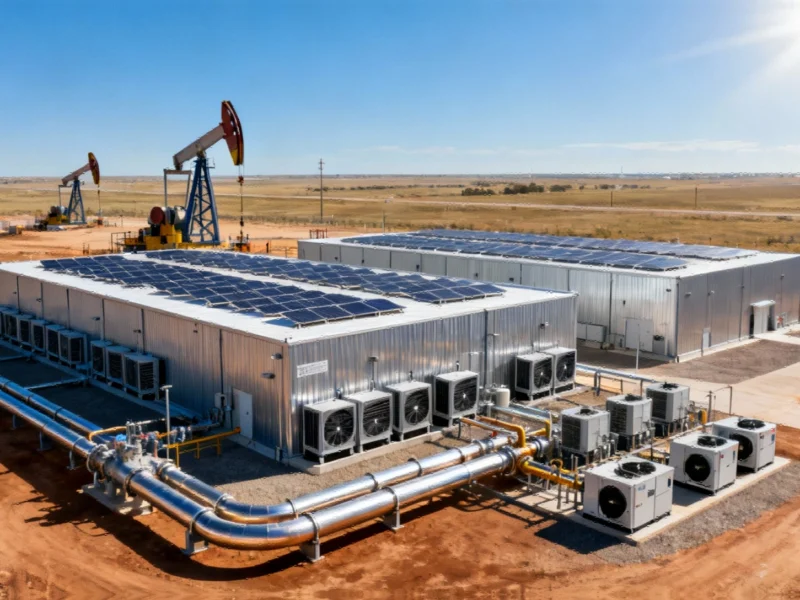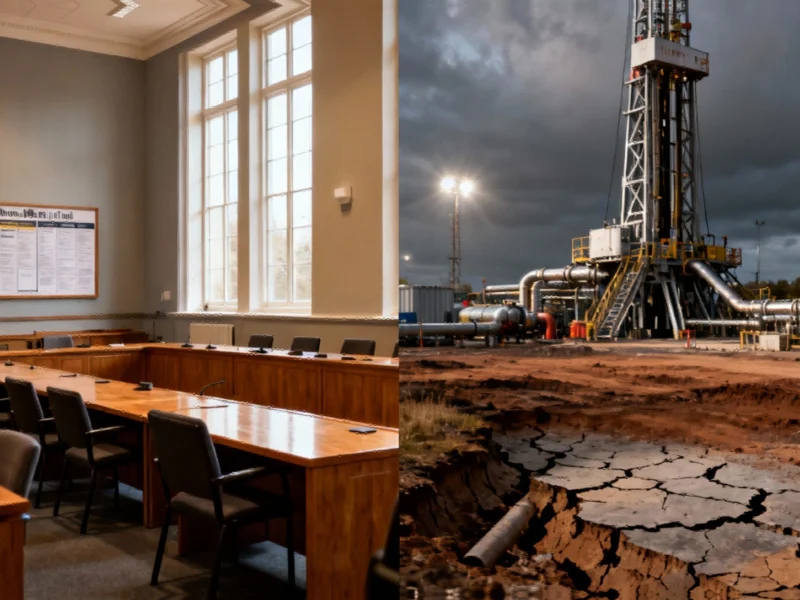The Hidden Solution to America’s Energy Crisis
As artificial intelligence datacenters trigger unprecedented electricity demand across the United States, a surprisingly simple policy approach is gaining bipartisan support for its ability to stabilize grids, reduce consumer bills, and support climate goals simultaneously. Demand flexibility—the practice of incentivizing energy conservation during peak usage periods—represents one of the most immediately deployable tools in America’s energy arsenal.
The timing couldn’t be more critical. According to energy experts, peak power demand is projected to surge by approximately 20% over the coming decade, driven largely by AI infrastructure expansion, manufacturing reshoring, electric vehicle adoption, and increasingly extreme weather conditions requiring more cooling. This unprecedented demand growth threatens both grid reliability and household budgets, with some states already experiencing dramatic price increases.
The Grid Strain Reality
Recent energy market developments highlight the urgency of the situation. States like California and Texas face elevated risks of dangerous blackouts during extreme weather events, while Missouri residents saw their power bills jump by 38% in a single year. The national average household electricity price increased by 9.5% this year alone, creating financial strain for millions of Americans.
Traditional responses to rising demand—building new fossil fuel infrastructure—present their own problems. The current administration’s approach of expanding gas infrastructure and delaying coal plant retirements locks in carbon emissions for decades, undermining climate goals while doing little to address affordability concerns.
The Flexibility Advantage
Demand flexibility offers a fundamentally different approach. Rather than simply generating more electricity, it focuses on better managing when and how we use energy. The concept is straightforward: reward customers—both residential and commercial—for reducing consumption during peak demand periods or for making stored energy (such as from home solar systems) available to the grid.
The potential impact is substantial. A recent Duke University study indicates that widespread adoption of flexibility policies could effectively add over 100GW of capacity—equivalent to the output of 30,000 utility-scale wind turbines or 50 Hoover Dams. This matches the projected 100GW of new datacenter demand expected by 2035.
Tim Profeta, co-author of the study and executive at Duke’s Nicholas Institute, emphasizes that datacenters specifically need “proactive plans to avoid drawing too much energy.” He notes that regulators can require flexibility plans in exchange for faster grid connection, creating a powerful incentive for cooperation.
State-Level Implementation
The policy’s bipartisan appeal is evident in its adoption patterns. Interestingly, the vast majority of demand flexibility programs have been implemented in Republican-led states, often through rural electric cooperatives and municipal utilities. This bipartisan energy strategy demonstrates how practical solutions can transcend political divisions.
In North Carolina, Governor Josh Stein recently established a taskforce specifically addressing skyrocketing energy demand through flexible load structures. Meanwhile, Texas has implemented requirements for large energy users—including datacenters—to enable remote disconnection during emergencies and report backup generation capacity.
California’s approach has been more measured, with Governor Gavin Newsom recently vetoing a demand flexibility study bill over concerns about regulatory workload. However, advisors indicate the administration remains committed to developing acceptable legislation in the coming year.
Real-World Success Stories
Practical implementations demonstrate the concept’s effectiveness. In Utah, Rocky Mountain Power offers homeowners $300 per kWh for sharing solar power captured by their battery storage systems. This arrangement helps the utility manage peak demand while participants enjoy some of the lowest power bills in the country.
Maryland provides another compelling example. Baltimore Gas Electric offers rebates for smart thermostat installation and compensates electric vehicle owners for allowing utility access to their batteries as backup power. These initiatives simultaneously improve grid reliability while reducing consumer costs.
Internationally, the UK successfully employed smart meters during the 2023 energy crisis to reward households that reduced consumption during high-demand “saving sessions.” The program provided 24-hour advance notice, enabling participants to plan their energy reduction without significant lifestyle disruption.
The Utility Incentive Challenge
Jigar Shah, energy entrepreneur and former DOE loan programs director, identifies a fundamental tension in implementation. “There’s a tension here between for-profit utilities with shareholders and keeping bills as affordable as possible,” he notes. Traditional utility business models often prioritize capital investments—which guarantee returns—over maximizing efficiency of existing infrastructure.
Shah argues that demand flexibility represents “one of the few tools that can be deployed at scale over the next few years to eliminate rate increases across the country.” Advocacy groups are consequently pushing for regulatory changes that would require utilities to optimize existing infrastructure before pursuing new capital projects.
Broader Industry Context
The energy management revolution coincides with other significant market trends affecting industrial and technology sectors. As companies navigate these changes, innovative approaches to resource management become increasingly valuable.
Meanwhile, related innovations in other fields demonstrate how technological advancement often requires rethinking traditional infrastructure and management approaches. The parallel development of sophisticated energy management systems reflects this broader pattern of technological evolution.
The infrastructure supporting these changes is also evolving, as seen in recent technology projects that incorporate energy efficiency as a core design principle. These developments highlight how forward-thinking planning can address multiple challenges simultaneously.
The Path Forward
As Profeta observes, demand flexibility’s appeal crosses political boundaries: “That seems to be a very attractive concept, no matter where you are in the political spectrum.” The approach offers tangible benefits to consumers, utilities, and the environment—a rare combination in energy policy.
While longer-term solutions like geothermal expansion will play important roles, demand flexibility provides an immediately available tool for managing the current energy transition. As governors across the country seek answers to affordability challenges, many are realizing that optimizing existing resources represents the most practical near-term solution.
With AI’s energy demands continuing to accelerate and climate concerns intensifying, smart energy management through demand flexibility may represent America’s most straightforward path toward a stable, affordable, and sustainable energy future.
This article aggregates information from publicly available sources. All trademarks and copyrights belong to their respective owners.



